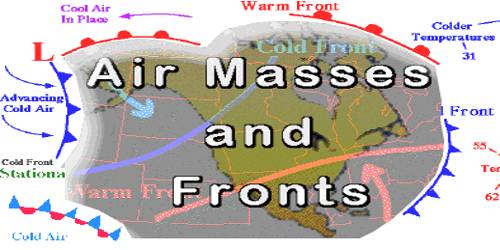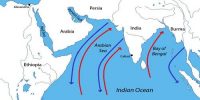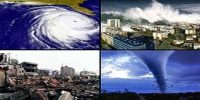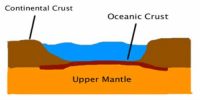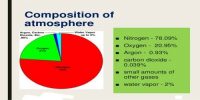Fronts of Air Masses
When two different air masses meet, the boundary zone between them is called a front. It is defined as the transition zone between two air masses of different density. Fronts extend not only in the horizontal direction but in the vertical as well. Therefore, when referring to the frontal surface (or frontal zone), we refer to both the horizontal and vertical components of the front.
The process of formation of the fronts is known as frontogenesis. There are four types of fronts:
(a) Cold; (b) Warm; (c) Stationary; (d) Occluded [(Figure (a), (b), (c)].
When the front remains stationary, it is called a stationary front. When the cold air moves towards the warm air mass, its contact zone is called the cold front, whereas if the warm air mass moves towards the cold air mass, the contact zone is a warm front.
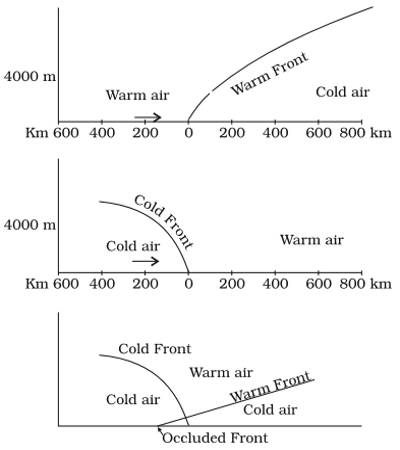
Figure: Vertical Sections of: (a) Warm Front; (b) Cold Front; (c) Occluded Front
If an air mass is fully lifted above the land surface, it is called the occluded front. The fronts occur in middle latitudes and are characterized by a steep gradient in temperature and pressure. They bring abrupt changes in temperature and cause the air to rise to form clouds and cause precipitation.
